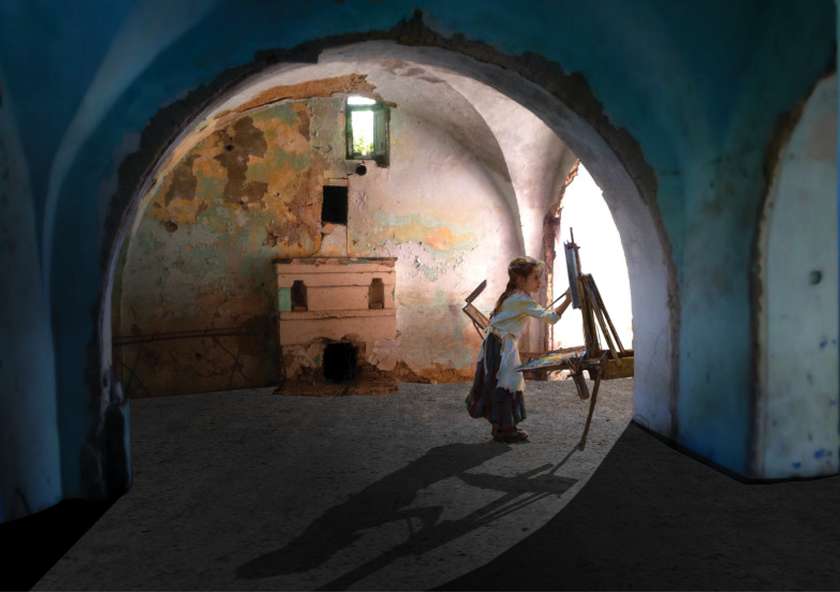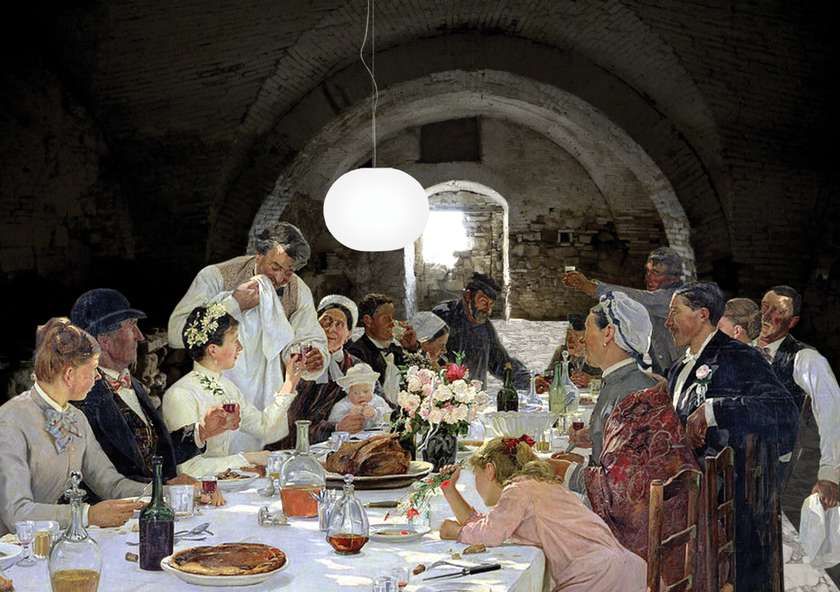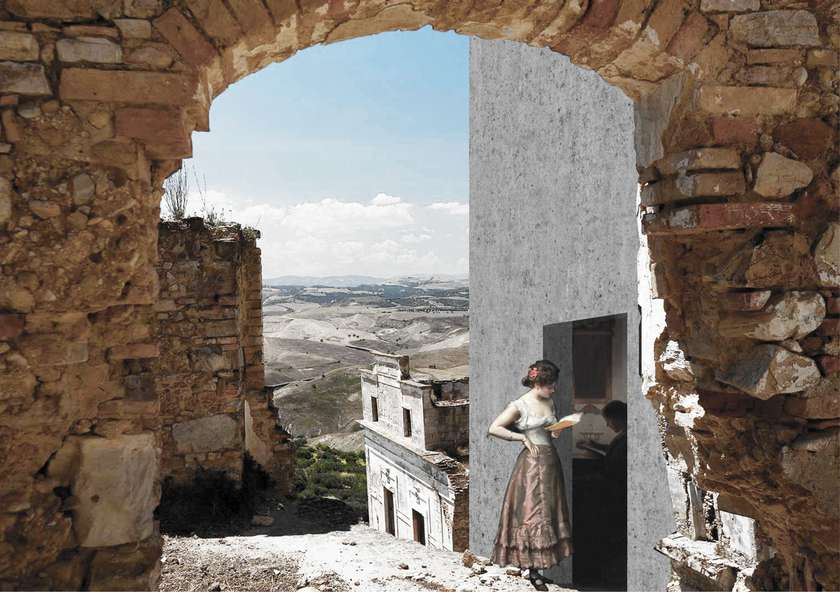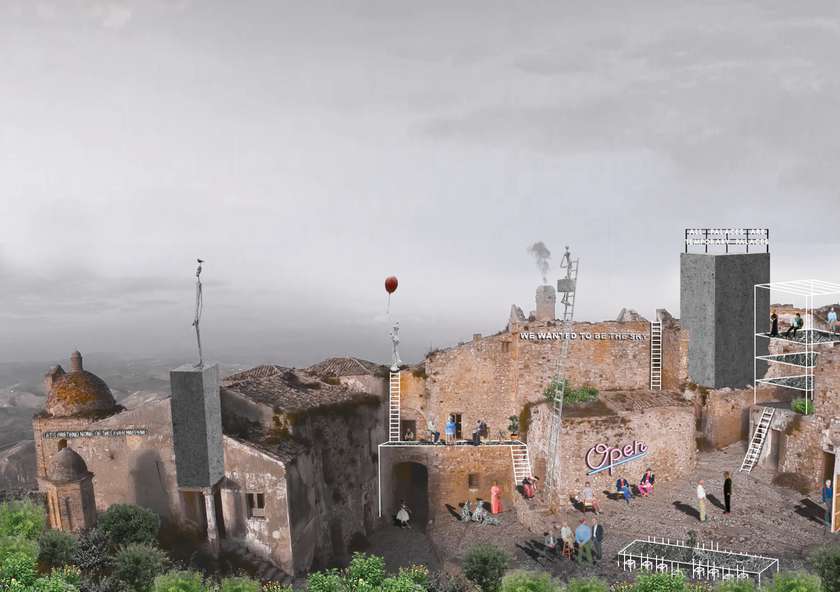Idea by
Susanna Lindvall, Luca Negrini
Negrini Lindvall Architettura
Call for ideas 2019
A Future for Ruined Cities:
A Future for Ruined Cities:
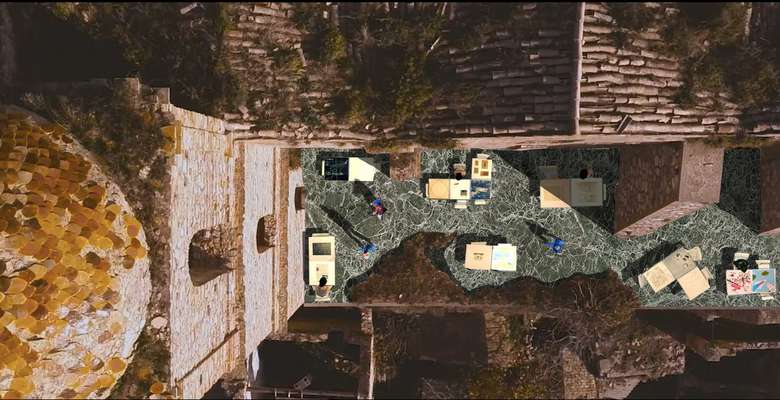
- Site-specific cases
This project, using the ruined town of Craco as an example, opens future possibilities and qualities that today are locked inside ruined cities of the past. It is explained in a conceptual way through a series of images made to spur the imagination and simplify the vision of newborn activity in dead places. The functions imagined to be injected in these places are those that make people return; creating a constant flow, and thus new life. Restructured public spaces and accesses facilitate social vibrance, regular workshops for students with accommodation and a layer of artistic culture in the shape of galleries, ateliers and small shops. This provides a base for the place with both settled and visiting people, that can be built upon.
These places serve a possibility of treating architecture in a playful way, cherishing its beautiful challenges and making them visible to the world instead of forgotten. Future architecture does not naturally mean it is new.
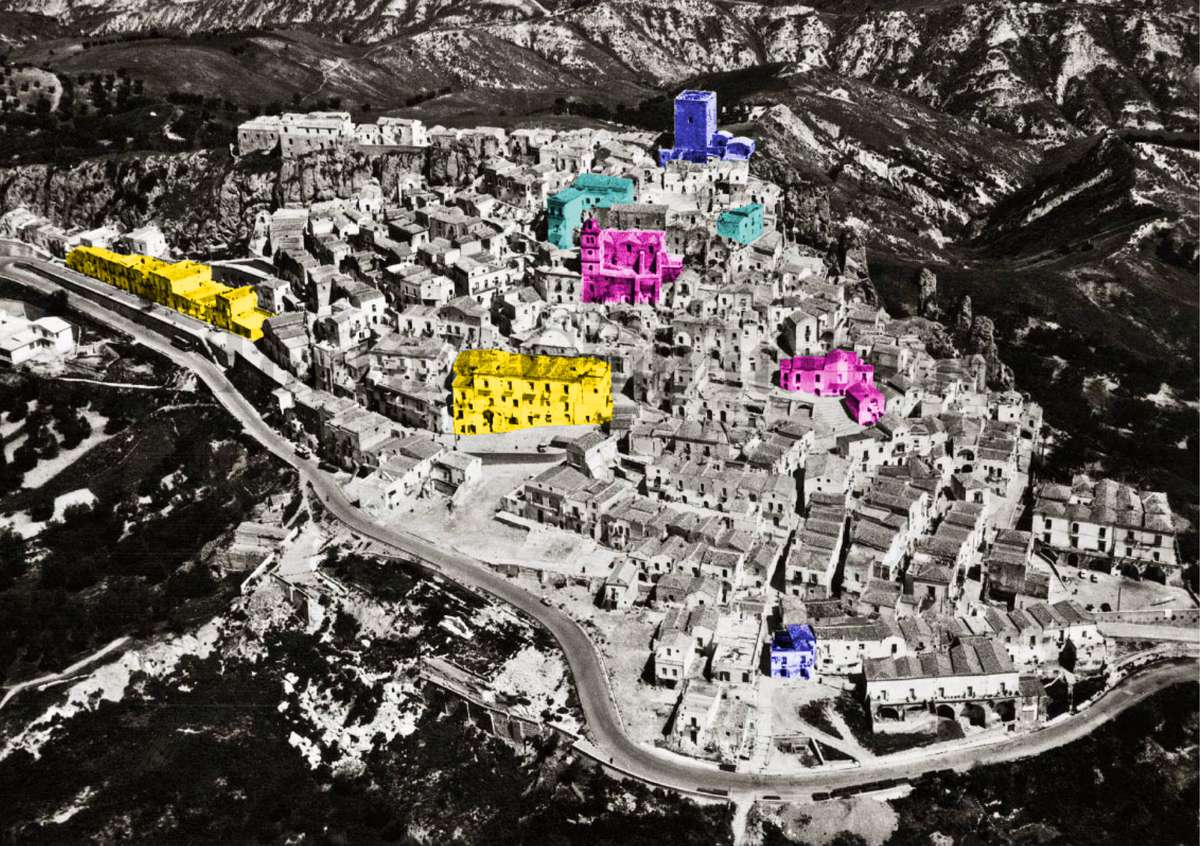
Blue = Gallery
Cyan = Ateliers
Pink = Workshop spaces
Yellow = Accommodation and shops
In relation to squares an accesses
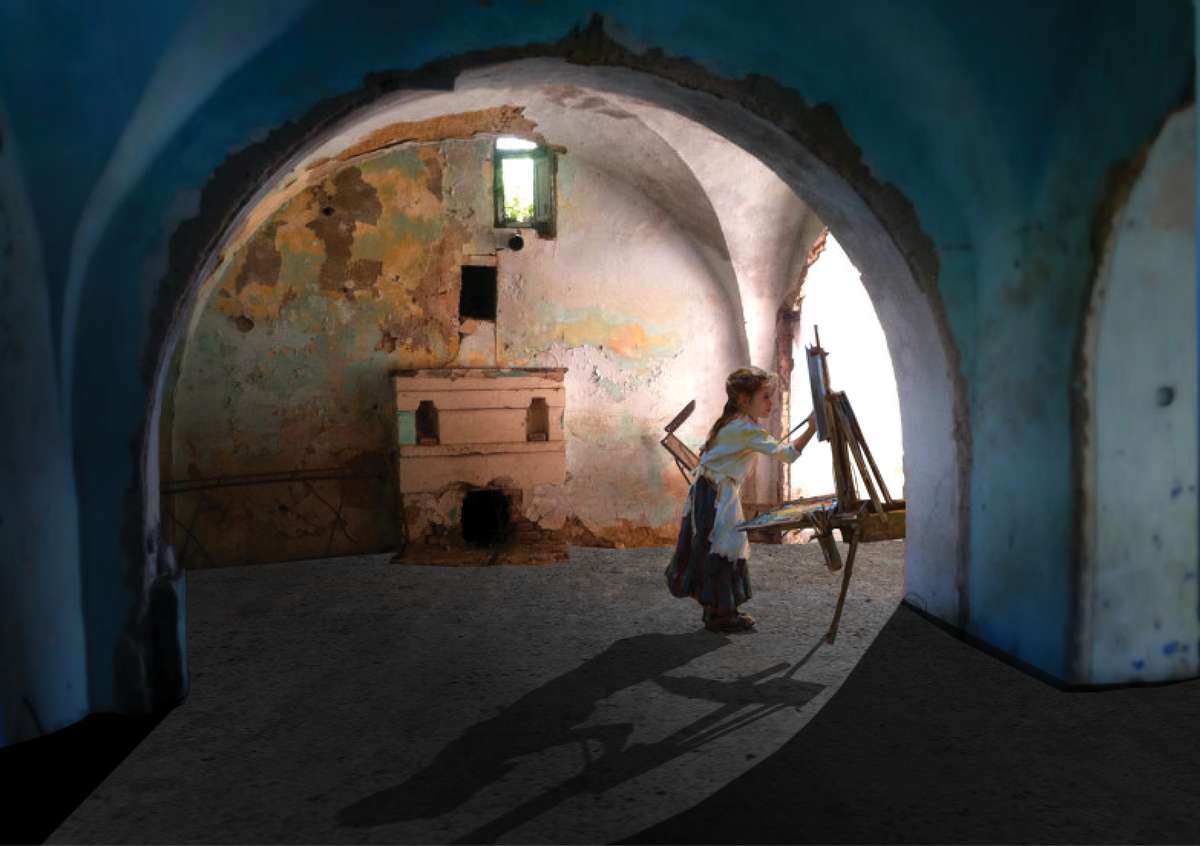
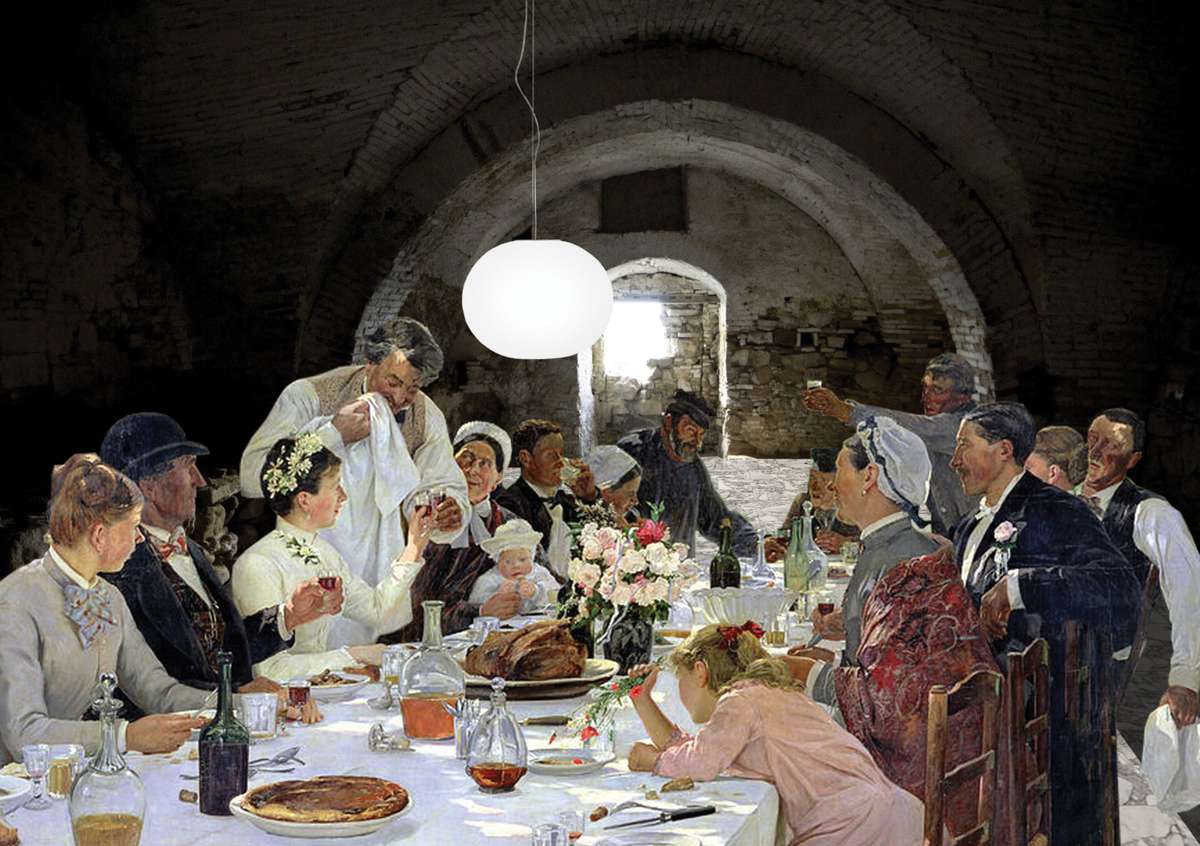

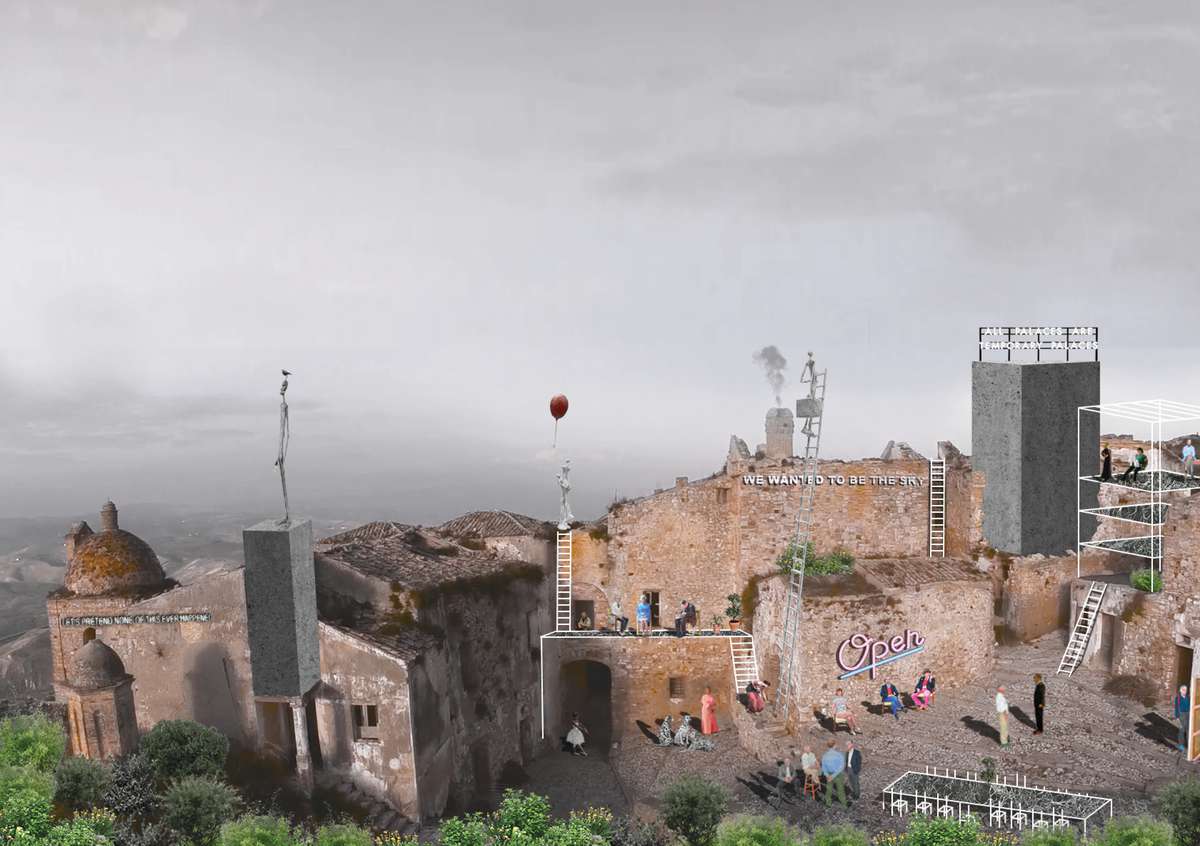
A Future for Ruined Cities:
A Future for Ruined Cities:

- Site-specific cases
This project, using the ruined town of Craco as an example, opens future possibilities and qualities that today are locked inside ruined cities of the past. It is explained in a conceptual way through a series of images made to spur the imagination and simplify the vision of newborn activity in dead places. The functions imagined to be injected in these places are those that make people return; creating a constant flow, and thus new life. Restructured public spaces and accesses facilitate social vibrance, regular workshops for students with accommodation and a layer of artistic culture in the shape of galleries, ateliers and small shops. This provides a base for the place with both settled and visiting people, that can be built upon.
These places serve a possibility of treating architecture in a playful way, cherishing its beautiful challenges and making them visible to the world instead of forgotten. Future architecture does not naturally mean it is new.

Blue = Gallery
Cyan = Ateliers
Pink = Workshop spaces
Yellow = Accommodation and shops
In relation to squares an accesses
